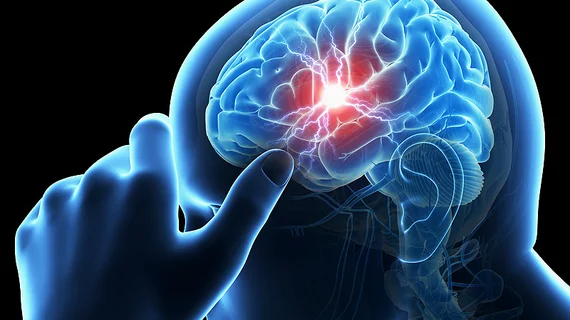'Very scary phenomenon': Experts offer guidance to counter nearly 40% drop in stroke imaging during pandemic
There has been a nearly 40% drop in imaging to evaluate stroke patients during the COVID-19 pandemic, which has experts offering guidance to help swing the pendulum in the other direction.
Scientists with Washington University School of Medicine in St. Louis and Stanford recently discovered this “troubling” trend by analyzing care data from nearly every state. Their findings, published Friday in the New England Journal of Medicine, signal that many may be deferring time-sensitive care for fear of contracting the virus.
“Our stroke team has maintained full capacity to provide emergency stroke treatment at all times, even during the height of the pandemic,” lead author Akash Kansagra, MD, an assistant professor at Washington University’s Mallinckrodt Institute of Radiology, said in a statement. “Nevertheless, we have seen a smaller number of stroke patients coming to the hospital and some patients arriving at the hospital after a considerable delay. It is absolutely heartbreaking to meet a patient who might have recovered from a stroke but, for whatever reason, waited too long to seek treatment.”
When patients suffer such an interruption in blood to the brain, a head CT scan is typically the first test performed. To reach their conclusions, Kansagra and colleagues looked to software known as RAPID that’s used to analyze these images. The team compared data from the week of March 26 to April 8—across 800 hospitals in 49 states—versus pre-pandemic levels in February. They found that clinicians used RAPID for an average of 1.18 patients per day per hospital before COVID compared to 0.72 patients per day after, a drop of 39%.
The trend persisted across all types of institutions and geographies, rural to urban. The authors speculate that it may be fueled by the effects of social distancing and fear of the disease.
“Across the board, everybody is affected by this decrease,” said Kansagra, who also sees stroke patients at Barnes-Jewish Hospital in St. Louis. “This is a widespread and very scary phenomenon.”
The Society of Vascular & Interventional Neurology has also witnessed this trend among its members and recently offered guidance in the journal Stroke. Many of the recommendations are “intuitive or straight forward,” according to David Liebeskind, MD president of society and director of the UCLA Stroke Center.
One key takeaway is that, since some stroke patients are unable to communicate, clinicians should initially assume that all such individuals have COVID-19. Targeting that diagnosis as soon as possible is critical to guiding what comes next and conserving critical personal protective equipment. With head CT typically the first clinical step for stroke patients, clinicians could also conduct chest computed tomography to look for signs of the virus, “if this does not unduly delay stroke treatment.” And angiography is another imaging tool that allows doctors to look at the blood vessels, the guidance noted.
“In stroke, imaging becomes incredibly important, and that becomes integrated as well,” Liebeskind said in a statement. “We can do the examination very easily via telemedicine, using a video link at the patient bedside. And, through that same link we can access the imaging information as well. At UCLA, we also have dedicated robots that can travel through the hospital that can do all of this,” he added.
You can read the Society of Vascular & Interventional Neurology’s guidance in stroke here, and read Washington University’s research correspondence here.

